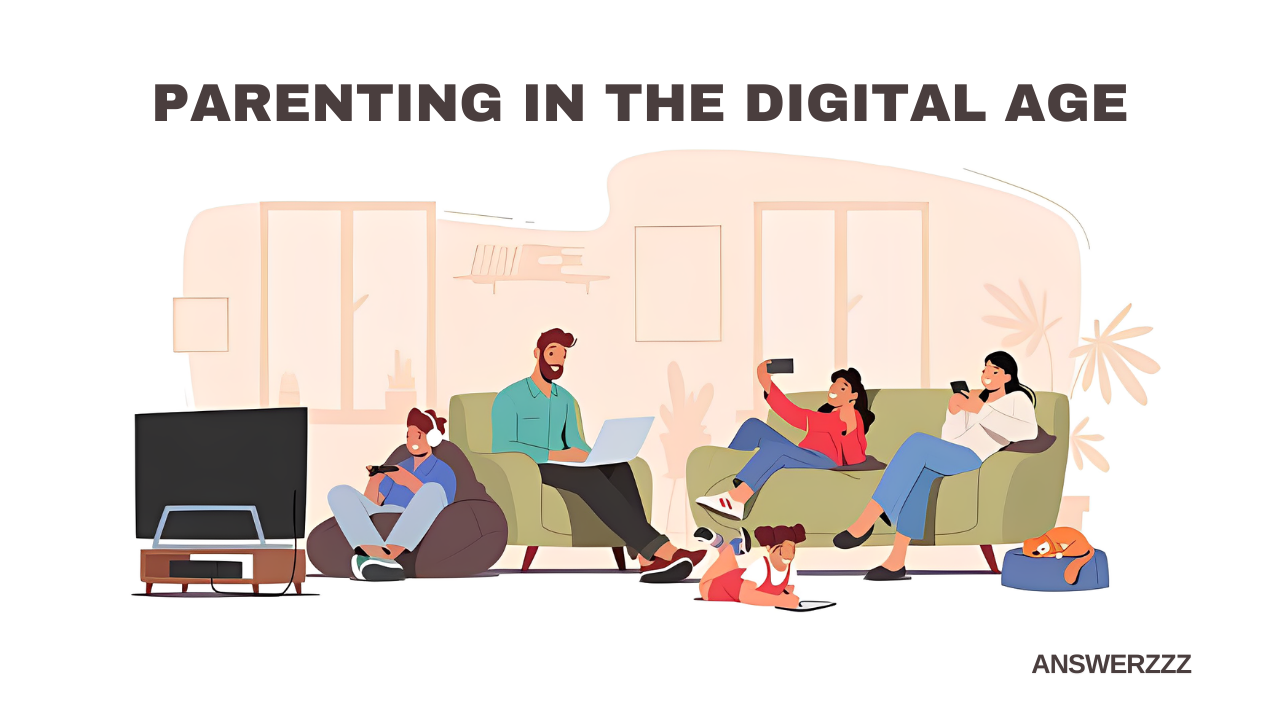In today’s digital age, parenting presents unique challenges and opportunities. With screens omnipresent in children’s lives—whether through smartphones, tablets, computers, or televisions—striking a balance between screen time and offline activities is more crucial than ever. This article explores the implications of digital consumption, the importance of offline activities, and practical strategies for parents to foster a healthy balance for their children.
The Rise of Digital Technology in Children’s Lives
The Ubiquity of Screens
Over the past decade, the proliferation of digital devices has transformed the way children learn, play, and interact. According to a report by Common Sense Media, children aged 0-8 spend an average of 2 hours and 19 minutes per day on screens, a figure that has been steadily increasing. This increase raises significant questions about the impact of excessive screen time on children’s development and well-being.
Benefits of Digital Engagement
While concerns about screen time are valid, it’s essential to acknowledge the benefits that technology offers. Digital platforms can be powerful educational tools, providing access to information, interactive learning experiences, and social connections. For example, educational apps and online resources can enhance literacy and numeracy skills, while video calls enable children to maintain relationships with distant family members.
Understanding Screen Time: Types and Effects
Coding and Robotics: Preparing Kids for a Tech-Driven Future
Types of Screen Time
Screen time can be categorized into different types, each with varying impacts on children:
- Passive Consumption: Activities such as watching television or scrolling through social media fall under this category. Passive screen time is often linked to negative outcomes, including obesity, poor sleep quality, and decreased attention spans.
- Interactive Engagement: This includes playing video games or using educational apps. While interactive screen time can promote problem-solving skills and creativity, excessive use can lead to addiction-like behaviours and social isolation.
- Educational Use: Online learning platforms, educational videos, and interactive tutorials fall under this category. Educational screen time can foster learning but must be balanced with offline activities.
Psychological and Physical Effects
Excessive screen time can have various effects on children’s psychological and physical health. Studies have shown links between high screen time and increased rates of anxiety, depression, and social withdrawal. Furthermore, prolonged screen exposure can lead to physical issues such as poor posture, eye strain, and disrupted sleep patterns.
The Importance of Offline Activities
Holistic Development
Offline activities play a vital role in children’s holistic development. Engaging in physical play, reading, arts and crafts, and social interactions fosters critical skills that screens cannot replicate. These activities promote creativity, physical health, and emotional intelligence.
Physical Health
Encouraging children to engage in physical activities is essential for maintaining a healthy lifestyle. The World Health Organization recommends that children aged 5-17 engage in at least 60 minutes of moderate to vigorous physical activity daily. Regular physical activity can help combat obesity, improve cardiovascular health, and enhance mood.
Social Skills
In-person interactions help children develop crucial social skills. Through activities such as team sports, playdates, and group projects, children learn how to communicate effectively, resolve conflicts, and build friendships. These skills are vital for success in both personal and professional spheres.
Creative Exploration
Offline activities provide opportunities for creative exploration that screens often cannot match. Art, music, and outdoor play encourage children to express themselves, think critically, and develop a sense of accomplishment. This creative exploration is integral to building self-esteem and resilience.
Practical Strategies for Balancing Screen Time and Offline Activities
Finding a balance between screen time and offline activities requires planning and consistent effort from parents. Here are practical strategies to help achieve this balance:
1. Set Clear Screen Time Guidelines
Establishing clear screen time guidelines is essential for helping children understand the importance of moderation. The American Academy of Pediatrics (AAP) suggests the following recommendations:
- For children aged 2 to 5 years, limit screen time to one hour of high-quality programming per day.
- For children aged 6 years and older, set consistent limits on the amount of screen time, ensuring that it does not interfere with sleep, physical activity, and other healthy behaviours.
2. Encourage Family Screen Time
Instead of allowing children to consume media in isolation, encourage family screen time. Watching educational shows or playing video games together fosters bonding and provides opportunities for meaningful discussions. This approach can also help parents monitor content and ensure it aligns with family values.
3. Foster Offline Interests
Help your child discover and pursue offline interests that align with their passions. Whether it’s sports, arts and crafts, music, or nature exploration, encourage them to engage in activities that stimulate their creativity and critical thinking. Provide the necessary resources and support to help them thrive in these areas.
4. Create a Family Activity Schedule
Designing a family activity schedule can help balance screen time and offline pursuits. Set aside specific times for family outings, game nights, or creative projects. This structure not only limits screen time but also fosters family bonding and creates lasting memories.
5. Model Healthy Screen Habits
Children often mimic their parents’ behaviours. By modelling healthy screen habits, such as limiting your own screen time, engaging in offline activities, and prioritizing family interactions, you set a positive example for your children. Show them that screen time is just one aspect of a fulfilling life.
6. Encourage Outdoor Play
Outdoor play is vital for physical health and emotional well-being. Encourage your children to explore nature, ride bikes, play sports, or participate in community events. Outdoor activities provide opportunities for physical exercise and help children develop a connection with the environment.
7. Implement Tech-Free Zones
Establish tech-free zones in your home, such as during family meals or before bedtime. These zones encourage face-to-face interactions and help reinforce healthy boundaries around screen use. Tech-free times promote better communication and allow for relaxation and unwinding without screens.
8. Utilize Educational Resources
Explore educational resources that align with your child’s interests. Many online platforms offer free or low-cost educational content that can supplement offline activities. Balance screen time with educational programming to ensure that your child benefits from their digital interactions.
Gaming for Good: How Video Games are Promoting Learning and Skills
9. Engage in Community Activities
Encourage your child to participate in community activities such as sports teams, clubs, or volunteer programs. These opportunities foster social connections and provide a sense of belonging. Community involvement helps children develop empathy, teamwork, and leadership skills.
10. Regularly Reevaluate Screen Time
As your child grows, their needs and interests will evolve. Regularly reevaluate your screen time guidelines and the balance between digital and offline activities. Engage in open discussions with your children about their preferences and feelings regarding screen use, and be willing to adjust your approach as necessary.
Navigating Screen Time in a Digital World

The Role of Technology in Education
As digital technology continues to evolve, its role in education becomes increasingly prominent. Many schools now incorporate technology into the curriculum, making it essential for parents to stay informed about their children’s digital learning experiences. Collaborate with teachers to understand how technology is being utilized in the classroom and support your child’s educational journey at home.
Online Safety and Digital Citizenship
In addition to balancing screen time, parents must prioritize online safety and digital citizenship. Teach your children about the importance of protecting their personal information, recognizing cyberbullying, and navigating online interactions responsibly. Encouraging responsible digital behaviour will empower them to thrive in an increasingly connected world.
Finding the Right Balance for Your Family
Every family is different, and finding the right balance between screen time and offline activities will vary based on individual needs and circumstances. Encourage open conversations within your family about screen use, helping everyone voice their thoughts and concerns. Together, you can establish a harmonious balance that supports each family member’s well-being.
Parenting in the digital age presents both challenges and opportunities. As screens become an integral part of children’s lives, finding a balance between screen time and offline activities is essential for promoting healthy development. By implementing practical strategies, fostering offline interests, and modeling hemo ellinghaviors, parents can help their children navigate the digital landscape while enjoying the benefits of offline exploration. The goal is not to eliminate screen time but to create a harmonious relationship between digital engagement and the rich experiences that life offline has to offer.
Wearable Technology: Monitoring Health and Safety for Children





